12 Mountain Ducks You Need to Know
There’s something truly special about spotting ducks in the mountains. Most people picture ducks paddling across calm ponds, gliding along rivers, or dabbling in coastal wetlands—but few imagine finding them high up in rugged mountain regions.
Yet, just like other birds, ducks have an incredible range of habitats, and some have perfectly adapted to life in high-altitude terrains. These hardy species are what we call mountain ducks—birds that thrive where the air is crisp, the streams rush cold, and the landscape feels wild and untouched.
If you’re a duck lover, learning to recognize these mountain-dwelling duck species adds a whole new level of excitement to your duck watching adventures. It’s one thing to spot a duck on a peaceful lake—but quite another to see one thriving against the backdrop of snow-capped peaks and tumbling streams.
And once you know which ducks thrive in rugged terrain, you start to notice how perfectly adapted they are—their strong legs for swimming against fast currents, their muted plumage blending into rocky backdrops, and their calm confidence in places where few other waterfowl dare to go.
In this post, I’ll introduce you to a few of these remarkable mountain ducks. Get to know them, and the next time you find yourself by an alpine lake or a tumbling mountain stream, you’ll see these birds not just as ducks—but as true adventurers of the high country.
1. Australian Shelduck

Also known as the Chestnut-breasted Shelduck or Mountain Duck, this striking bird is one of Australia’s largest native ducks. You’ll often find them near freshwater lakes, rivers, wetlands and high, open country where few other ducks venture. Their glossy green-black head contrasts beautifully with their chestnut breast and white collar, making them easy to spot from afar. These ducks are loyal partners—mated pairs often return to the same nesting sites each year. Outside the breeding season, they gather in large flocks on inland lakes, creating quite a spectacle for anyone lucky enough to see them.
2. Harlequin Duck
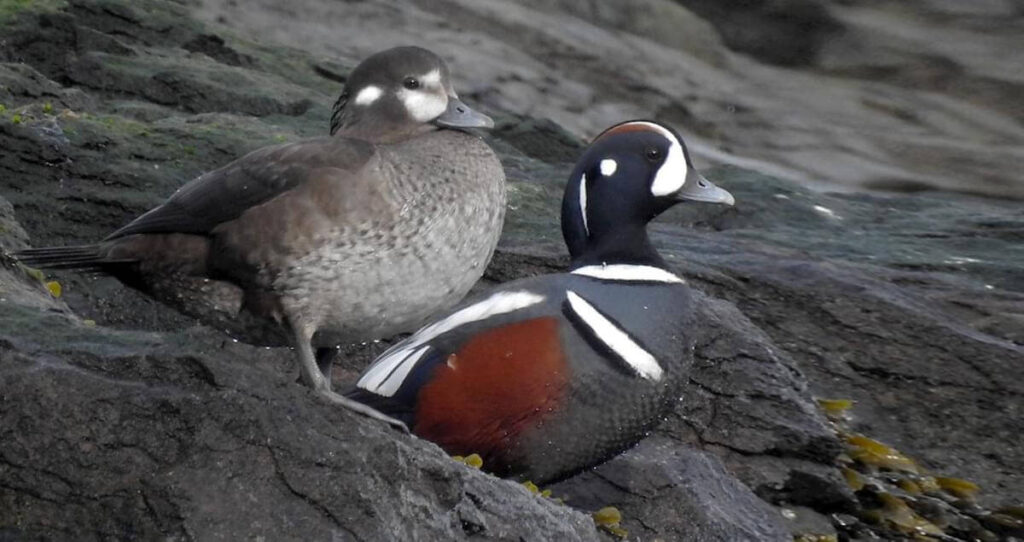
If you’ve ever stood by a roaring mountain stream and noticed a small, colorful duck bobbing confidently in the current, that’s likely a Harlequin Duck. These little adventurers love rough, fast-moving water. During breeding season, they make their homes along cold mountain rivers, while in winter they head to rocky coastlines where crashing waves suit them perfectly. They dive deep to catch aquatic insects, fish eggs, and tiny crustaceans. Their name comes from their bold plumage—males wear a stunning mix of blue, chestnut, and white patterns that make them look almost painted. Harlequin Ducks are a true symbol of wild water, and their rugged lifestyle makes every sighting feel special.
3. Torrent Duck

The Torrent Duck is one of South America’s most remarkable mountain birds. Found along the Andes, from Venezuela to Patagonia, it thrives in fast-flowing, icy rivers where few other creatures can survive. Watching one is pure joy—they cling to rocks in the rapids and dive fearlessly into rushing water to hunt for insects and larvae. These ducks are also known for their strong pair bonds; they mate for life and nest in hidden riverbank holes or rock crevices. Although they live in some of the most remote mountain areas, their populations remain steady, a reassuring sign that wild rivers still run clean and alive in parts of the Andes.
4. Blue Duck (Whio)
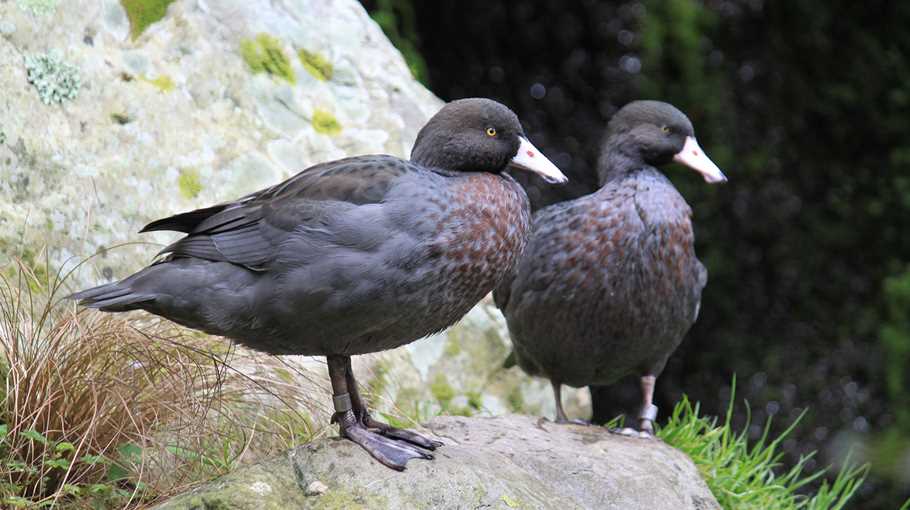
The Blue Duck, or Whio, is one of New Zealand’s true mountain treasures. Perfectly adapted for life in fast-flowing rivers, it’s built like a little river surfer—streamlined body, strong legs, and a rubbery bill made for scraping insect larvae off slippery rocks. Their soft, whistling call—“whio”—echoes through mountain valleys and is how they got their Māori name. Unlike many other ducks, Whios don’t migrate; they stick to the same stretch of river all year. Sadly, predators like stoats and habitat loss have reduced their numbers, but conservation programs such as the Whio Forever Project are giving them hope—raising ducklings in captivity and returning them to safe, wild rivers where that gentle “whio” call can still be heard.
5. Barrow’s Goldeneye
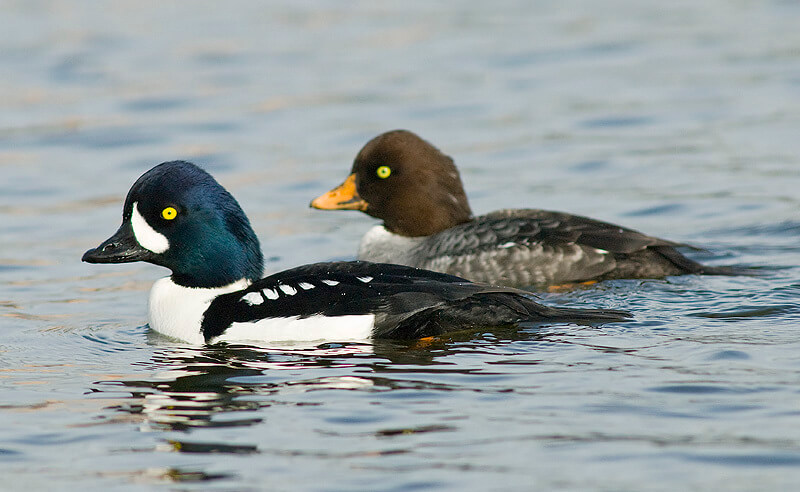
Barrow’s Goldeneye prefers clear mountain lakes, swift rivers, and even fjords during breeding season. With their glossy black-and-white plumage and bright golden eyes, they’re easy to recognize, especially when the males puff out their chests in courtship displays. These ducks are fiercely loyal to their breeding territories, often returning to the same spot year after year, sometimes even the same nesting tree. They’re expert divers too, plunging below the surface to catch aquatic insects and small crustaceans. In North America, they share territory with Common Goldeneyes, but spotting the subtle differences—like Barrow’s steeper forehead and purplish sheen—can make any birdwatcher’s day.
6. Common Merganser
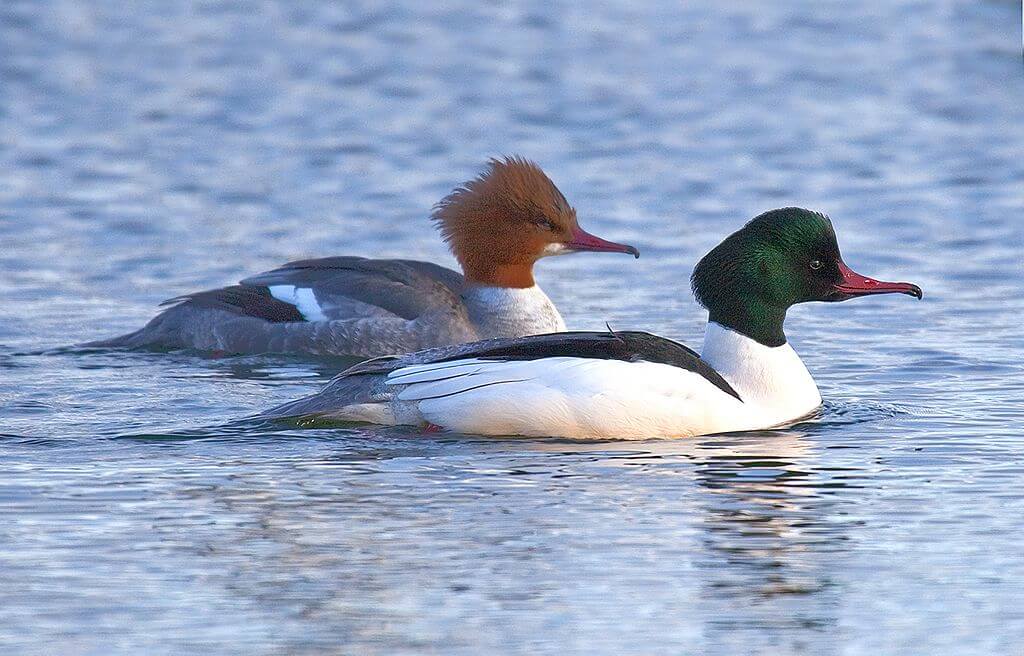
The Common Merganser is an elegant, long-bodied duck that glides gracefully along clear mountain rivers and lakes. With its sharp, saw-edged bill, it’s perfectly equipped for catching fish, earning it the nickname “sawbill.” Males are striking with glossy green heads and white bodies, while females sport a reddish-brown crest that gives them a windswept look. These ducks love cold, clean water and are often seen leading ducklings in a tidy line downstream—a heartwarming sight for any watcher. Common Mergansers nest in tree cavities or cliffs close to water, and though they migrate when lakes freeze, many stay year-round in milder mountain regions where the rivers keep running.
7. Salvadori’s Teal
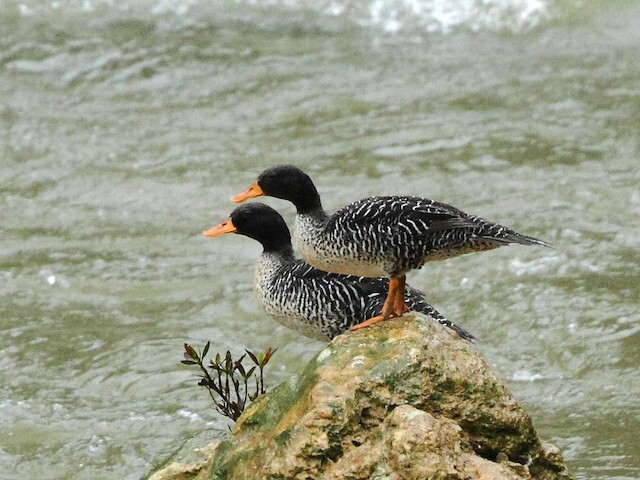
Salvadori’s Teal is a shy and secretive duck that calls the mountain rivers of New Guinea home. It loves fast-flowing streams and cool, clear lakes surrounded by forested hills. You’ll often find them close to rocky riverbanks or resting quietly in shaded pools, blending in beautifully with their surroundings. Unlike many other ducks, Salvadori’s Teal prefers solitude or the company of a mate rather than large flocks. Because they live in such remote places, they’re rarely seen, but that’s part of their charm—each sighting feels like discovering a hidden treasure of the highlands.
8. Brazilian Merganser

The Brazilian Merganser is one of the world’s rarest ducks and a true symbol of wild, unspoiled rivers. It lives in Brazil’s mountain streams and clear rivers surrounded by native forest, depending on clean water to survive. These ducks are very territorial—each pair guards its own long stretch of river, driving away any intruders. Their slender, saw-edged bills are perfect for catching fish, which make up most of their diet. Sadly, deforestation, pollution, and dam construction have greatly reduced their numbers, but ongoing conservation projects are working to restore rivers and protect this incredible species from disappearing.
9. Scaly-sided Merganser

If you ever spot a Scaly-sided Merganser, consider yourself very lucky! This stunning duck lives along clean, forested rivers in the mountains of East Asia. It gets its name from the delicate, scaly pattern on its white flanks, which looks almost like fine armor. These mergansers nest in tall trees, using natural hollows to keep their eggs safe above the waterline. They are excellent divers, hunting fish and aquatic insects beneath the surface. Because they rely so much on unpolluted rivers and old forests, habitat protection is vital to their survival—making every preserved stretch of wild river a safe haven for them.
10. Andean Duck
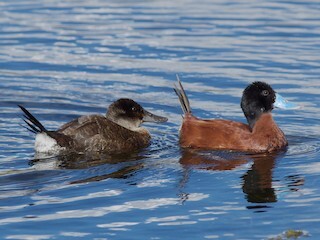
The Andean Duck is a true highlander, living in the lofty Andes Mountains from Colombia to Chile and northern Argentina. It prefers quiet lakes and ponds nestled among grasslands and rocky slopes at high elevations—sometimes thousands of meters above sea level! Compact and strong, this duck is built for cold, thin air and often stays put year-round, rather than migrating. It dives to feed on aquatic plants and insects, using its sturdy legs to paddle deep beneath the surface. Though not very social, the Andean Duck’s calm presence adds a special touch to the mountain scenery—proof that even in the toughest habitats, life finds a way to thrive.
11. African Black Duck
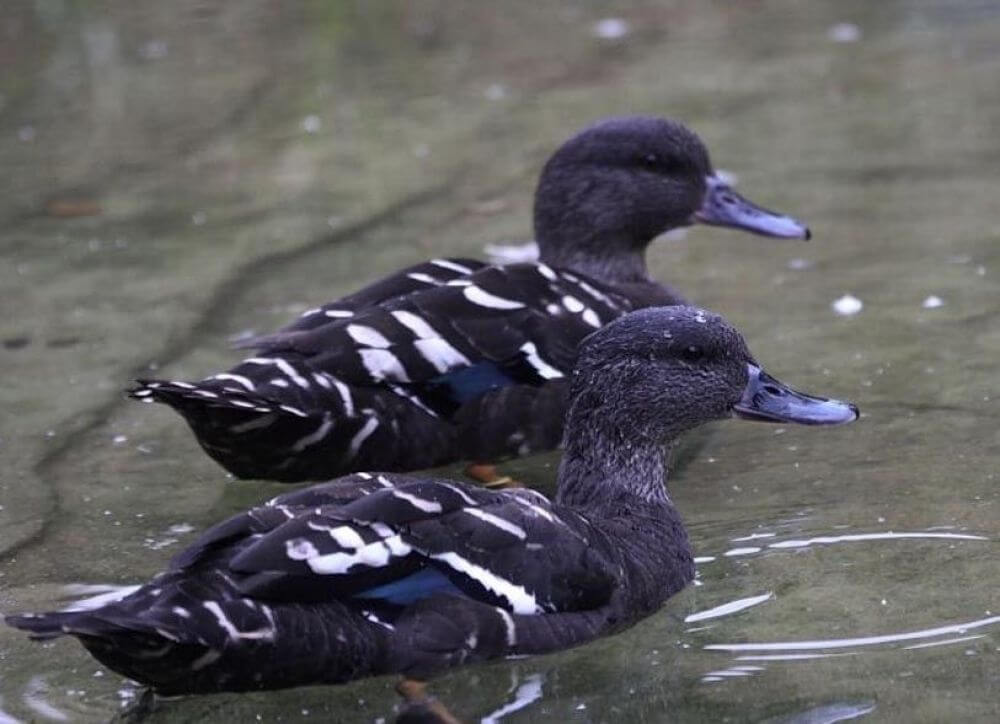
The African Black Duck is a tough and elusive species perfectly suited to life in fast-moving mountain streams. It favors clear, rocky rivers shaded by trees—often tucked away in hilly or forested areas where the water runs cool. Its dark, mottled plumage blends beautifully with the shadows and stones, helping it stay hidden from predators. While it spends the day in these sheltered streams, it sometimes ventures out at night to nearby ponds or lakes to feed and rest. Known for its strong swimming ability, the African Black Duck dives and paddles easily through rushing water, making it one of Africa’s most rugged and adaptable river ducks.
12. Crested Shelduck
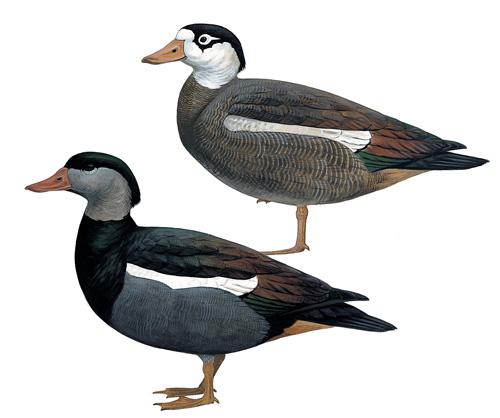
The Crested Shelduck is one of the most mysterious ducks in the world. Once found in East Asia—from Korea to eastern Russia—it is now so rarely seen that some fear it may already be extinct. This elegant duck was known to inhabit river mouths, coastal wetlands, and mountain lakes surrounded by forest. Its green-black crest and striking chestnut and white plumage made it truly unique. Some reports suggest it may have preferred remote, high-altitude wetlands far from human disturbance. Today, the Crested Shelduck remains a symbol of mystery and hope among bird lovers—proof that even the rarest species can inspire efforts to protect wild wetlands everywhere.
